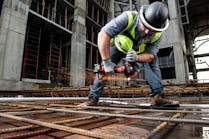Relay, an autonomous shuttle program launched in Virginia, is offering officials a better understanding of how driverless shuttles navigate live traffic, and how to improve work zone safety. The program connected a rail station with a busy residential and shopping district, operating in live traffic, according to Gov Tech. It was viewed largely as a pilot program to introduce the technology to users, close-first mile, last-mile gaps, and explore how AV shuttles could be used daily.
Some of the Relay shuttle challenges included its low speed (10 mph), an inability to operate fully in inclement weather, and downtime needed for software upgrades. The county is looking into shuttles with more capabilities and features, as well as exploring an on-demand service model.
The Virginia Tech Transportation Institute (VTTI) also studied the project closely, installing additional cameras and monitoring the operation closely. According to the article, the team looked for interesting events like acceleration, disengagement from the AV system during an emergency stop, etc.
VTTI has also been working to test and develop connected vehicle technologies with work zones well-suited for these advancements. The team developed an application called the Work Zone Builder to allow the transportation officials designing a work zone to publish useful data for autonomous or connected vehicles.
Connected vehicle technologies have broad potential to improve the safety of not only work zones, but the rest of the highway as well, said Cathy McGhee, director of research and innovation with the Virginia Transportation Research Council at VDOT.





